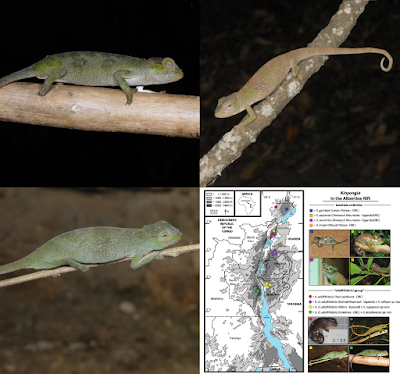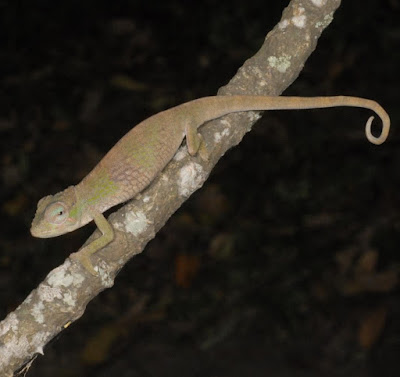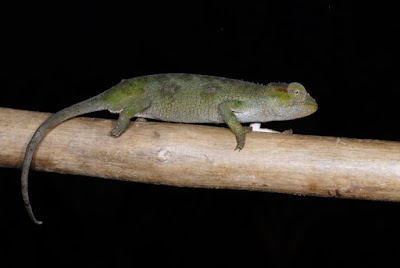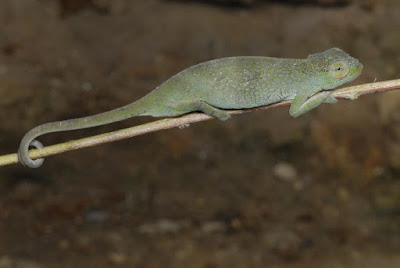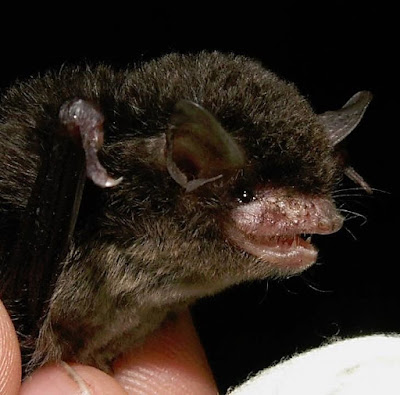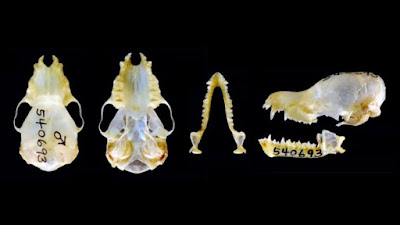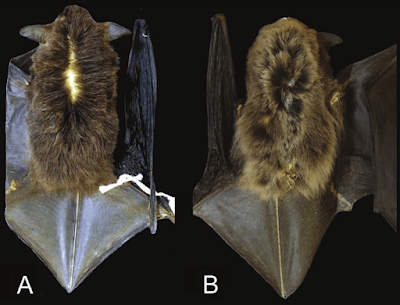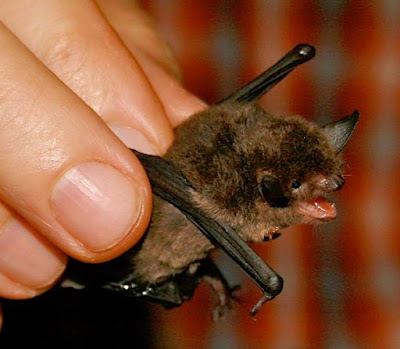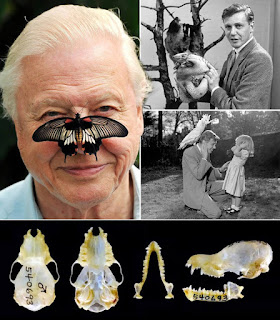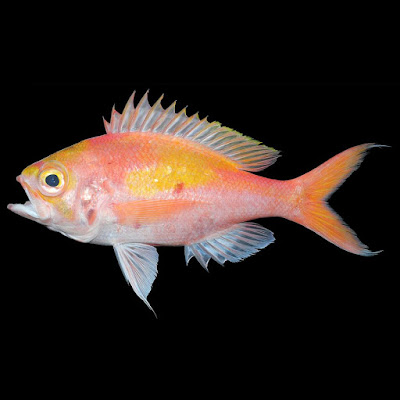[Most Recent Entries] [Calendar View]
Wednesday, June 21st, 2017
| Time | Event | ||||||||
| 5:32a | [Herpetology • 2017] Integrative Taxonomy of the Central African Forest Chameleon, Kinyongia adolfifriderici (Sauria: Chamaeleonidae), Reveals Underestimated Species Diversity in the Albertine Rift
Abstract The Albertine Rift (AR) is a centre for vertebrate endemism in Central Africa, yet the mechanisms underlying lineage diversification of the region’s fauna remain unresolved. We generated a multilocus molecular phylogeny consisting of two mitochondrial (16S and ND2) and one nuclear (RAG1) gene to reconstruct relationships and examine spatiotemporal diversification patterns in the AR endemic forest chameleon, Kinyongia adolfifriderici (Sternfeld, 1912). This widely distributed species was revealed to be a complex of four genetically distinct and geographically isolated species. Three new species are described based on molecular analyses and morphological examinations. We find that Kinyongia rugegensis sp. nov. (Rugege Highlands) and Kinyongia tolleyae sp. nov. (Kigezi Highlands) form a well-supported clade, which is sister to K. gyrolepis (Lendu Plateau). Kinyongia itombwensis sp. nov. (Itombwe Plateau) was recovered as sister to K. adolfifriderici (Ituri Rainforest). The phylogeographic patterns we recovered for Kinyongia suggest that speciation stemmed from isolation in forest refugia. Our estimated diversification dates in the Miocene indicate that most species of Kinyongia diverged prior to the aridification of Africa following climate fluctuations during the Pleistocene. Our results highlight the AR as a focal point of diversification for Kinyongia, further elevating the global conservation importance of this region. Keywords: biodiversity, biogeography, Burundi, conservation, Democratic Republic of the Congo, diversification, molecular systematics, new species, phylogeography, Uganda.
Daniel F. Hughes, Chifundera Kusamba, Mathias Behangana and Eli Greenbaum. 2017. Integrative Taxonomy of the Central African forest chameleon, Kinyongia adolfifriderici (Sauria: Chamaeleonidae), Reveals Underestimated Species Diversity in the Albertine Rift. Zool J Linn Soc. zlx005. DOI: 10.1093/zoolinnean/zlx005 Team discovers 3 chameleon species http://phy.so/417104584 @physorg_com | ||||||||
| 3:27p | [Mammalogy • 2017] Caribbean Myotis (Chiroptera, Vespertilionidae), with Description of A New Species, Myotis attenboroughi, from Trinidad and Tobago
Abstract We describe a new species of Myotis (Vespertilionidae, Myotinae) from the Republic of Trinidad and Tobago, Tobago Island. The new species (Myotis attenboroughi sp. nov.) can be distinguished from all other Neotropical congeners by cranial features and cytochrome-b gene sequences. Myotis attenboroughi sp. nov. is allied morphologically with species in the albescens group (like M. nigricans), and is sister to a clade including M. cf. handleyi, M. nesopolus, and 3 possibly undescribed species from Central and South America. A review of Myotis collections from the Caribbean confirms M. nyctor for Barbados and Grenada; M. dominicensis for Dominica and Guadeloupe; M. martiniquensis for Martinique; M. pilosatibialis and M. riparius for Trinidad; and M. attenboroughi for Tobago. The occurrence of M. attenboroughi on Trinidad is still an open question. Keywords: Caribbean, Lesser Antilles, Myotis attenboroughi, Myotis nigricans, Neotropics, Sir David Attenborough’s Myotis Ricardo Moratelli, Don E. Wilson, Roberto L. M. Novaes, Kristofer M. Helgen and Eliécer E. Gutiérrez. 2017. Caribbean Myotis (Chiroptera, Vespertilionidae), with Description of A New Species from Trinidad and Tobago. J Mammal. gyx062. DOI: 10.1093/jmammal/gyx062 T&T goes batty over first endemic mammalian species | Loop News http://www.looptt.com/content/tt-goes-ba Describimos una nueva especie de Myotis (Vespertilionidae, Myotinae) de la República de Trinidad y Tobago, isla de Tobago. La nueva especie (Myotis attenboroughi sp. nov.) se distingue de otros congéneres Neotropicales en sus rasgos craneanos y secuencias del gen citocromo b. Myotis attenboroughi sp. nov. es morfológicamente similar a especies del grupo albescens (tal como M. nigricans) y es hermana de un clado que incluye a M. cf. handleyi, M. nesopolus, y tres especies, posiblemente no descritas, de Centro y Sud América. Una revisión de las series de Myotis del Caribe confirma a M. nyctor para Barbados y Granada; M. dominicensis para Dominica y Guadalupe; M. martiniquensis para Martinica; M. pilosatibialis y M. riparius para Trinidad; y M. attenboroughi para Tobago. La presencia de M. attenboroughi en Trinidad sigue siendo hoy un enigma. Singular bat Zoologists have named a newly discovered species of bat after the veteran British naturalist and broadcaster David Attenborough. Scientists analysed museum records of specimens of 377 Caribbean bats, and found that a species apparently endemic to the island of Tobago is morphologically and genetically different from the mainland species (Myotis nigricans) to which it had been assigned taxonomically for almost a century. Taxonomist Ricardo Moratelli and his team named the bat (pictured) Myotis attenboroughi in honour of the naturalist, who has inspired generations of wildlife biologists. The findings were published on 7 June (R. Moratelli et al. J. Mammal. http://doi.org/b78; 2017). | ||||||||
| 3:50p | [Ichthyology • 2017] Cymatognathus aureolateralis • A New Genus and Species of the Family Symphysanodontidae (Perciformes) from North Sulawesi, Indonesia
Abstract A new genus and species of the percoid family Symphysanodontidae, Cymatognathus aureolateralis are described based on three specimens collected from North Sulawesi, Indonesia. The new species shares with the confamilial genus Sym-physanodon the unique supraneural and spinous dorsal-fin pterygiophore insertion pattern usually of 0/0/0+2+1/1/, T-shaped first supraneural, foreshortened base of the penultimate ventral procurrent caudal-fin ray, well-developed outer tooth patches at anterior tips of both jaws as well as along the medial surface of most of the length of the coronoid process of the dentary. The new species, however, is distinguishable from members of Symphysanodon by the following diagnostic characters: posterior tip of coronoid process of dentary abruptly depressed, so that teeth on anterior portion appear as an elevated patch, anterior tip of upper jaw not notched, and posterior nostril horizontally slit-like. Although the new species superficially resembles the members of the genus Giganthias (Giganthiidae) and some members of the subfamily Anthiadinae (Serranidae) in the unique characters it shares with Symphysanodon, it differs from Giganthias in having the above-mentioned unique pterygiophore insertion pattern and tips of all dorsal- and pelvic-fin spines smooth (vs. pterygiophore insertion pattern 0/0/2/1+1/1/, and tips of second, third and/or fourth dorsal- and pelvic-fin spines serrated), and from the members of Anthiadinae in having two flat opercular spines (vs. three) and 10 + 15 = 25 vertebrae (vs. 10 + 16–18 = 26–28). A revised diagnosis of the Symphysanodontidae is presented. Keywords: Pisces, new genus, new species, familial diagnosis, Sulawesi, Bitung
Etymology: The name “ Cymatognathus ” is derived from the Greek kymatos (wave) and gnathos (jaw) in reference to the characteristic wavy upper contour of the lower jaw. The specific name “aureolateralis” is derived from Latin aurum ( gold) and lateralis (side) in reference to the bright yellow marking laterally on body. Seishi Kimura, G. David Johnson, Teguh Peristiwady and Keiichi Matsuura. 2017. A New Genus and Species of the family Symphysanodontidae, Cymatognathus aureolateralis (Actinopterygii: Perciformes) from Indonesia. Zootaxa. 4277(1); 51–66. DOI: 10.11646/zootaxa.4277.1.4 |
| << Previous Day |
2017/06/21 [Calendar] |
Next Day >> |
